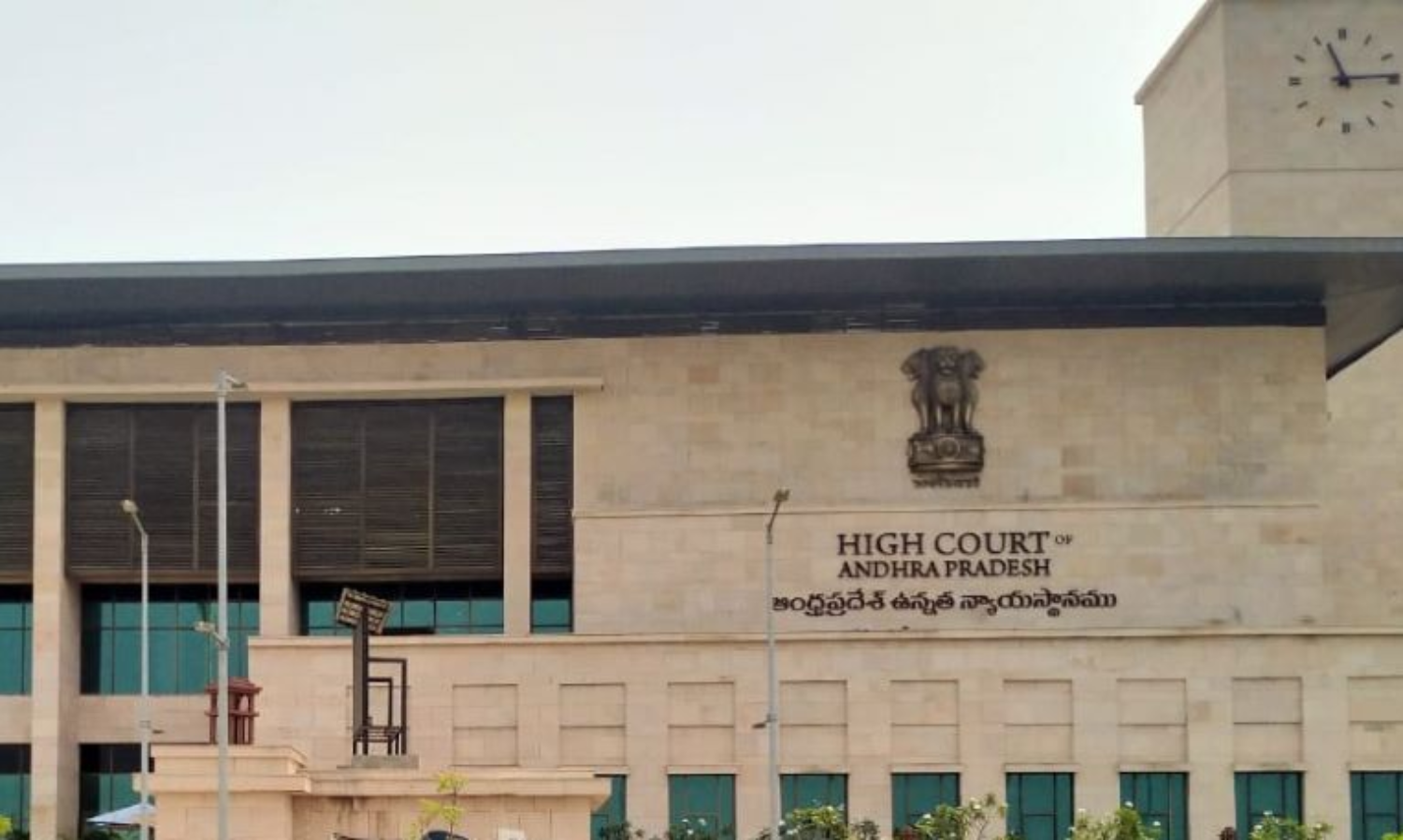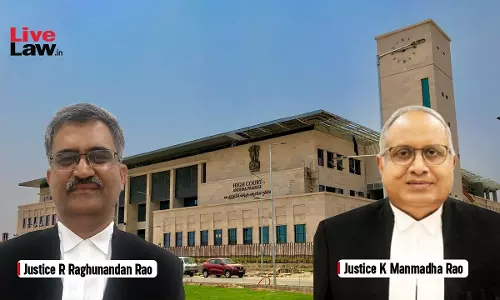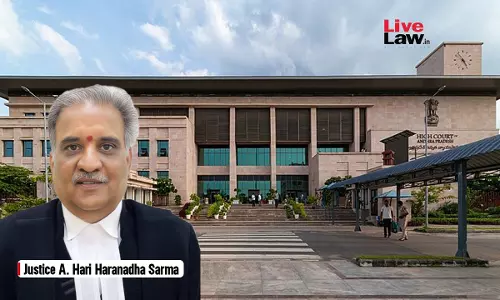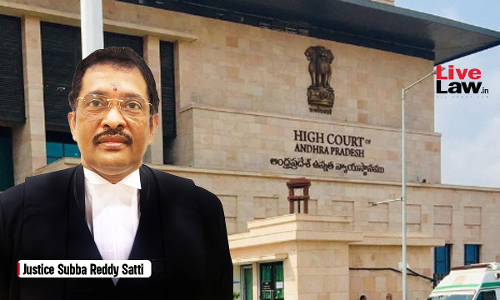S. 304 IPC | Andhra Pradesh High Court Sets Aside Conviction Upon Finding 'Glaring Inconsistencies' Between Ocular And Medical Evidence

The Andhra Pradesh High Court has set aside a conviction under section 304 of the IPC upon finding that the trial court overlooked the 'glaring inconsistencies between the ocular/eyewitness testimony and medical evidence.'Prosecution alleged that the deceased was thrown off a stage by the accused, following which the accused struck him with a stool, leading to him sustaining grievous...
The Andhra Pradesh High Court has set aside a conviction under section 304 of the IPC upon finding that the trial court overlooked the 'glaring inconsistencies between the ocular/eyewitness testimony and medical evidence.'
Prosecution alleged that the deceased was thrown off a stage by the accused, following which the accused struck him with a stool, leading to him sustaining grievous head injuries, which he would later succumb to. Court noted that the deceased passed away eleven days after being discharged from the hospital, and the prosecution had failed to show any injuries in his head/area with the doctor opining that the cause of death may have been natural.
In setting aside the verdict of conviction by the trial court, a bench of Justice A.V. Ravindra Babu held:
"Though the prosecution examined direct witnesses who alleged overt acts against the accused, but their ocular testimony has no corroboration from the medical evidence. The allegations attributed against the accused is that when he forcibly pushed the deceased, the deceased fell in between the reaper and as a result, his head was struck. Further not satisfied with that he hit the back of the neck of the deceased with stool. If those allegations are true, corresponding injury or injuries were supposed to be found on the back of the neck of the deceased or in the cervical area. So, it is a glaring inconsistency between the ocular evidence and medical evidence."
The Bench relied on Darbar Singh v. State of Punjab (2012) to iterate that when dealing with discrepancies between ocular and medical evidence, ocular evidence should only be disbelieved when medical evidence rules out the possibility of it being true.
The accused/appellant challenged the order of the trial Court due to a substantial delay in filing of report before the police. It was submitted that only on the 4th day of the deceased being admitted to the hospital, an intimation was sent to the police, wherein, curiously it was stated that the deceased sustained injuries after falling off a stage.
Adding to that, it was submitted that only when the constable showed up to take the statement of the deceased, did the deceased name the accused as the culprit.
The appellant vehemently contended that the prosecution failed to establish any external or internal injury on the cervical canal (injury to which caused the death according to the autopsy) and that the deceased was discharged in good health and his death could not be associated with the accused.
In furtherance of his claim, the appellant relied on the deposition of the doctor who stated that the death could be due to natural causes.
Lastly, the appellant contended that the prosecution had based its case solely on the testimony of the family of the deceased, which could not be accepted unless their evidence was backed by medical evidence as the family of the deceased were all interested witnesses.
The prosecution per contra contended that the accused was convicted after considering all the facts and circumstances.
It was contended that in the music orchestra that was held for the Kumabhishekum of Lord Krishna Temple on 6th June 2007, the accused and deceased got into an altercation about the seating arrangement, causing the accused to push the deceased off the stage and hit him with a wooden stool when he was stuck in between the chairs.
The deceased was taken to a private doctor, who referred the deceased to RUIA Hospital Tirupati and thereafter the deceased was shifted to a government hospital on the 11th of June, 2007.
According to the case of the prosecution, an intimation was given by the Government hospital to the police on the 11th, and when the investigation was conducted, the deceased narrated the incident before the police and his family deposed as eyewitnesses.
The prosecution also contended that due to financial difficulty, the family was not able to bear the expenditure of the Hospital and shifted the deceased home on 14th June 2007 and within 10 days the deceased succumbed to his injuries.
The bench noted that the excuse of financial paucity could not be accepted as the deceased was admitted under the 'Parana Dana Scheme' which is an initiative by the Government to provide medical health free of cost.
Justice Ravindra Babu also noted that as per the autopsy, the death was caused due to injury to cervical canal stenosis, and not injuries inflicted by the accused, and explained:
"In medical parlance cervical stenosis is a narrowing of the cervical spinal canal. This narrowing of the cervical spinal canal may result in compression of the spinal cord/or the nerve roots and affect the function of the spinal cord or the nerve. The spinal stenosis can put pressure on the spinal cord and nerves within the spine. It commonly occurs in the neck of lower back. So, the spinal canal stenosis is nothing but a disease in the relevant spinal area. The opinion of the medical officer, who conducted postmortem examination, is that the cause of death be due to chronic illness due to injuries to cervical canal stenosis. Therefore, without there being any corresponding injury on the back of the neck or the cervical area, it is very difficult to believe that there is injury to stenosis with quadripligia attributable to the alleged act of the accused."
Adding to that, serious emphasis was laid on the deposition of the doctor who conducted the autopsy, wherein she stated that she could not find any internal or external injuries on the deceased because he had been treated for the same, before being discharged
It was also stated that since the deceased had died 10 days after his discharge, there was a high possibility that the two incidents were unrelated.
Justice Ravindra noted that the deceased at the first instance had informed his private doctor that he had fallen off the stage and stuck to the story until the police showed up at the hospital to take his statement, which was 4 days after the incident. To the police, the deceased informed them that he had been pushed by the accused.
The bench found it strange that no one from the family of the deceased had preferred a complaint before the Police, despite the incident having left the deceased hospitalized. The Court thus, chose not to believe the version presented by the deceased and narrated by his family members.
"In my considered view, the prosecution miserably failed to establish the nexus between the act alleged against the accused and the death of the deceased. Even the genesis of the occurrence as projected by the prosecution suffers with any amount of doubtful circumstances and improbabilities. In my considered view, the prosecution before the learned Additional Sessions Judge failed to prove the accused attacked the deceased on the back of his neck with a stool on 06.09.2007 at 11-00 p.m. and the death of the deceased is on account of the act alleged against the accused," it held.
Accordingly, the order of conviction was set aside.
Crla 1481 of 2010
Counsel for petitioner: Suresh Kumar Reddy Kalava
Counsel for respondent: Public Prosecutor




